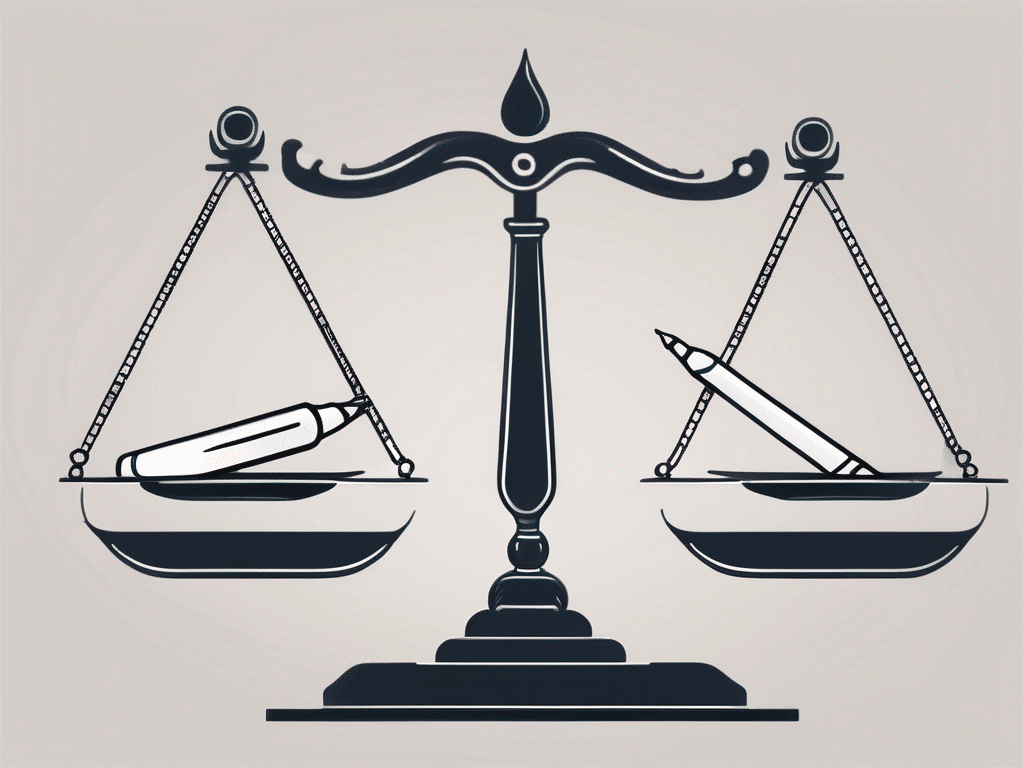A partnership agreement is a crucial document for any business partnership. It outlines the rights, responsibilities, and obligations of the partners, as well as other important aspects of the partnership. Whether you’re starting a new business or formalizing an existing partnership, understanding how to write a partnership agreement is essential for the success and longevity of your venture.
Understanding the Importance of a Partnership Agreement
A partnership agreement serves as a legal safeguard for the partners involved. It provides clarity on various aspects of the partnership, preventing misunderstandings and disputes down the line. By clearly defining the rights and responsibilities of each partner, a partnership agreement provides a solid foundation for a successful business relationship.
Moreover, a partnership agreement can also address other critical aspects such as decision-making processes, dispute resolution mechanisms, and procedures for admitting new partners or exiting existing ones. This comprehensive document acts as a blueprint for the partnership’s operations, ensuring that all partners are on the same page and reducing the likelihood of conflicts.
Defining a Partnership Agreement
A partnership agreement is a legally binding contract that sets out the terms and conditions of the partnership. It covers crucial details such as the name of the partnership, the type of business, and the duration of the partnership. It also outlines the roles, contributions, and profit-sharing arrangements between the partners.
Furthermore, a well-drafted partnership agreement can include provisions related to non-compete clauses, confidentiality agreements, and procedures for handling partner disputes. These additional clauses help protect the interests of the partners and the business as a whole, ensuring a smoother operation and minimizing potential legal risks.
Why You Need a Partnership Agreement
While it may be tempting to rely on verbal agreements or assumptions, a written partnership agreement is essential to protect the interests of all parties involved. It helps prevent misunderstandings, resolve conflicts, and provide a clear roadmap in case of disputes or dissolution of the partnership.
Additionally, a partnership agreement can also outline the process for adding new partners, addressing partner incapacity or death, and establishing guidelines for the distribution of assets in the event of dissolution. These provisions offer a level of security and stability to the partners, ensuring that the business can navigate unforeseen circumstances with clarity and fairness.
Key Elements to Include in a Partnership Agreement
When drafting a partnership agreement, there are several key elements that you should include to ensure its effectiveness and comprehensive coverage. A well-crafted partnership agreement serves as a roadmap for the business, outlining the rights, responsibilities, and expectations of all parties involved. Let’s delve deeper into some additional crucial components that can further strengthen the foundation of your partnership.

Identifying the Partners
Begin the partnership agreement by clearly identifying all the partners involved. Include their full names, addresses, and any other relevant details to avoid any confusion or ambiguity. It is essential to provide a detailed description of each partner’s role within the business to establish a clear understanding of their contributions and responsibilities. Additionally, consider including a section that outlines the process for adding new partners in the future, ensuring transparency and accountability in the growth of the partnership.
Defining the Business Purpose
Clearly outline the purpose and objectives of the partnership. Describe the nature of the business, the products or services offered, and the target market. This section helps align all partners’ expectations and ensures a shared vision for the business. In addition to defining the core business activities, consider including a strategic planning section that outlines short-term and long-term goals, as well as strategies for achieving them. By setting clear objectives, the partnership can stay focused and work towards common milestones.
Capital Contributions and Profit Sharing
Specify each partner’s initial capital contributions, as well as any ongoing financial obligations. Clearly define how profits and losses will be allocated among the partners, whether it’s based on capital contributions or a different arrangement. To enhance financial transparency, consider including a provision for regular financial reporting and audits to track the performance of the partnership. This can help identify any discrepancies early on and facilitate informed decision-making to drive the business forward.
Decision Making and Dispute Resolution
Establish a decision-making process to ensure effective governance of the partnership. Define how major decisions will be made, the roles and responsibilities of each partner, and the process for resolving disputes or disagreements. In addition to outlining decision-making protocols, consider incorporating a conflict resolution mechanism that outlines steps for addressing conflicts in a constructive manner. By proactively addressing potential disputes, the partnership can maintain harmony and focus on achieving its business objectives.
Steps to Drafting a Partnership Agreement
Now that you understand the importance of a partnership agreement and the key elements to include, let’s discuss the steps involved in drafting a partnership agreement.

Creating a partnership agreement is a crucial step in establishing a successful business relationship. This document lays out the rights, responsibilities, and expectations of all partners involved, helping to prevent misunderstandings and conflicts down the line. By following a structured approach to drafting the agreement, you can ensure that all aspects of the partnership are clearly defined and agreed upon.
Gathering Necessary Information
Before you start drafting the partnership agreement, gather all the relevant information about the partners, the business, and the intended terms and conditions. This could include financial projections, market research, and any other documents that provide insights into the partnership’s objectives.
Thoroughly understanding the goals and objectives of the partnership is essential in crafting an agreement that aligns with the collective vision of all parties involved. By conducting comprehensive research and data collection at this stage, you can lay a solid foundation for the agreement that reflects the aspirations and expectations of the partnership.
Outlining the Agreement
Start by creating an outline for your partnership agreement. Break it down into sections, using appropriate headings and subheadings. This will help ensure that all the necessary components are covered and serve as a roadmap for drafting the agreement itself.
Organizing the partnership agreement into distinct sections can help streamline the drafting process and make it easier for all parties to navigate the document. By clearly outlining each aspect of the agreement, from the roles and responsibilities of each partner to the decision-making processes and dispute resolution mechanisms, you can create a comprehensive framework that sets the groundwork for a successful partnership.
Reviewing and Revising the Draft
Once you have the initial draft of the partnership agreement, review it carefully. Check for any legal or technical errors and ensure that all the agreed-upon terms are accurately reflected. Seek input from all partners and consider consulting legal professionals to ensure the agreement covers all necessary aspects and protects everyone’s interests.
Thoroughly reviewing and revising the draft partnership agreement is a critical step in the process. By engaging all partners in the review process, you can incorporate diverse perspectives and ensure that the final document accurately represents the collective intentions of the partnership. Seeking legal counsel can provide valuable insights and ensure that the agreement complies with relevant laws and regulations, offering a layer of protection for all parties involved.
Legal Considerations for a Partnership Agreement
While there is no universal template for a partnership agreement, it is important to be aware of the legal considerations that may apply to your specific jurisdiction or industry.

Understanding Legal Requirements
Research the legal requirements for partnerships in your jurisdiction. Familiarize yourself with any specific regulations or obligations that may need to be addressed in the partnership agreement. This could include registration requirements, tax obligations, or industry-specific regulations.
Protecting Your Interests
Consider adding clauses to the partnership agreement that protect your interests and address potential risks. For example, you may want to include provisions regarding non-compete agreements, intellectual property ownership, or the process for admitting new partners or withdrawing from the partnership.
Seeking Legal Advice
If you are unsure about any legal aspects of the partnership agreement, it is always wise to seek advice from a qualified attorney. They can provide guidance specific to your situation and ensure that your partnership agreement is legally sound and provides adequate protection for all parties involved.
However, legal considerations for a partnership agreement go beyond just meeting the basic requirements and protecting your interests. It is also important to consider the long-term implications and potential challenges that may arise during the course of the partnership.
For instance, you may want to include provisions in the agreement that outline the decision-making process for major business decisions, such as entering into contracts or making significant investments. This can help prevent disputes and ensure that all partners have a say in important matters.
Furthermore, it is crucial to address the issue of dispute resolution in the partnership agreement. By including a clause that outlines the steps to be taken in case of a disagreement or conflict, you can save time, money, and potential damage to the partnership. This could involve mediation, arbitration, or other alternative dispute resolution methods.
In conclusion, while understanding the legal requirements and protecting your interests are vital aspects of a partnership agreement, it is equally important to consider the long-term implications and potential challenges that may arise. By addressing decision-making processes and dispute resolution mechanisms in the agreement, you can establish a strong foundation for a successful and harmonious partnership


